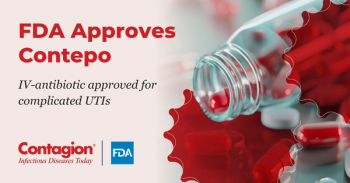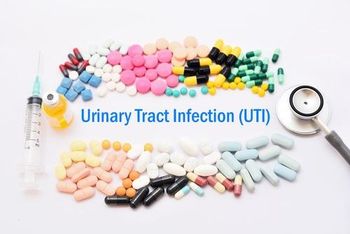
Zerbaxa and Avycaz: Considerations for Treatment
Peter L. Salgo, MD; Jason Pogue, PharmD, BCPS-AQID; Andrew Shorr, MD; Marin Hristos Kollef, MD; and Yoav Golan, MD, identify, in light of the available guidelines and data, the rationale behind and optimal use of currently approved cephalosporin/β-lactamase inhibitor combinations.
Peter L. Salgo, MD: Let’s let me ask this. You start with one of these drugs, like Zerbaxa [ceftolozane]. How do you de-escalate it? Is de-escalation in the cards for some of these patients, and if so, how?
Jason Pogue, PharmD, BCPS-AQID: We de-escalate in the same exact way. If we’re using these up front—and I’m stressing that there is a population we should be doing this for—much like if we start cefepime up front, in the majority of patients I’d de-escalate that drug as well. The same principles hold true. You’re using it up front to give the best likelihood, but if it doesn’t warrant that coverage, then we’re going to scale back.
Andrew Shorr, MD: I think the better question about de-escalation for MDR [multidrug-resistant] pseudomonal infections is, What is the duration of therapy? You will probably get 4 different answers around this table because the literature on this point is very, very difficult to tease out.
Jason Pogue, PharmD, BCPS-AQID: Bad.
Peter L. Salgo, MD: The word bad comes to us.
Andrew Shorr, MD: Bad. We have studies for ventilator-associated pneumonia. We have Jean Chastre’s study from JAMA [Journal of the American Medical Association] of 7 versus 10 days with documented VAP [ventilator-associated pneumonia], and among the nonfermenters, Pseudomonas and Acinetobacter, there was a step up in recurrence with no step up in mortality. Well, what does that mean? And then we have the doripenem study that Marin was the first author on, where if they were getting doripenem, which is an active carbapenem against Pseudomonas, and you stopped it early versus in 10 days, there was a mortality penalty that basically killed that trial. And then you have a set of guidelines from the ATS/IDSA [American Thoracic Society/Infectious Diseases Society of America] on pneumonia that actually says 7 for Pseudomonas that I think a lot of us are uncomfortable with.
I don’t want to speak for everybody else because I’ve done that enough today, but I feel very uncomfortable stopping documented pseudomonal therapy when I know the pathogen and I know the susceptibilities at 7 days, unless the patient looks pristine. Do I think 14 days is OK? I think 14 days is probably too long. Is there a Goldilocks point? I have no idea. Does it mean we should be doing more procalcitonin? I’m not so sure about that either because I think procalcitonin has other issues. I think the bigger question for these pseudomonal infections is, How long are we going to treat for? That’s the key to preserving future antibiotics: not abusing the antibiotic.
Jason Pogue, PharmD, BCPS-AQID: I agree with everything that Andy just said, for the most part.
Peter L. Salgo, MD: That’s terrible.
Jason Pogue, PharmD, BCPS-AQID: For the most part. But the big issue is that the duration piece is very unsettled for Pseudomonas. The only thing I’ll say is that people are changing their practice because of the guideline recommendation change. But if you dig into it, no new data came out to drive that change in recommendation. They just interpreted it in a different way from that standpoint. If you actually look at the recurrence subset in the supplemental material, you could argue that they misinterpreted some data from that standpoint. I think that is a huge question that is still out there.
Peter L. Salgo, MD: Before we leave this topic—and I think we’ve actually answered this, but I want to really drive it home if we can—is there a rationale for using either of these agents empirically in high-risk individuals as opposed to just waiting for the results and using them when they’re indicated by culture or by PCR [polymerase chain reaction]?
Marin Hristos Kollef, MD: No, I think there is a rationale for doing it. I think you’ve heard it from all the panelists here, but it has to be in the right patient. I think the right patient is going to vary from institution to institution. I can tell you in our medical intensive care unit, we know that there are certain long-term acute care facilities where they see a lot of CRE [carbapenem-resistant Enterobacteriaceae]. We have certain populations of patients, transplant or CF [cystic fibrosis] patients, where we do see a lot of carbapenem-resistant Pseudomonas. It’s within those populations where we would consider doing it. But the other point that I think has to be echoed is the dosing and the de-escalation. It doesn’t make any sense to me at all to underdose a drug and give it for a longer period of time. That’s just a formula for breeding more resistance, and that’s something that clearly should not be done with these newer agents. It shouldn’t be done with any agent.
The other thing that really has to be done—and people have to have their feet held to the fire—is reacting to the culture results. That’s why they’re so important to get. You would think that it’s an automatic thing. Yes, because these are generally more expensive drugs, hospitals are going to be focused on them from a de-escalation standpoint, but that should be true for all agents.
Peter L. Salgo, MD: Cultures, cultures, cultures, and acting on data? Well, I hear this a lot. How come we still have to even mention this? Apparently, we do.
Yoav Golan, MD: Good data.
Peter L. Salgo, MD: Good data, all right.
Newsletter
Stay ahead of emerging infectious disease threats with expert insights and breaking research. Subscribe now to get updates delivered straight to your inbox.

































































































































































































































































































